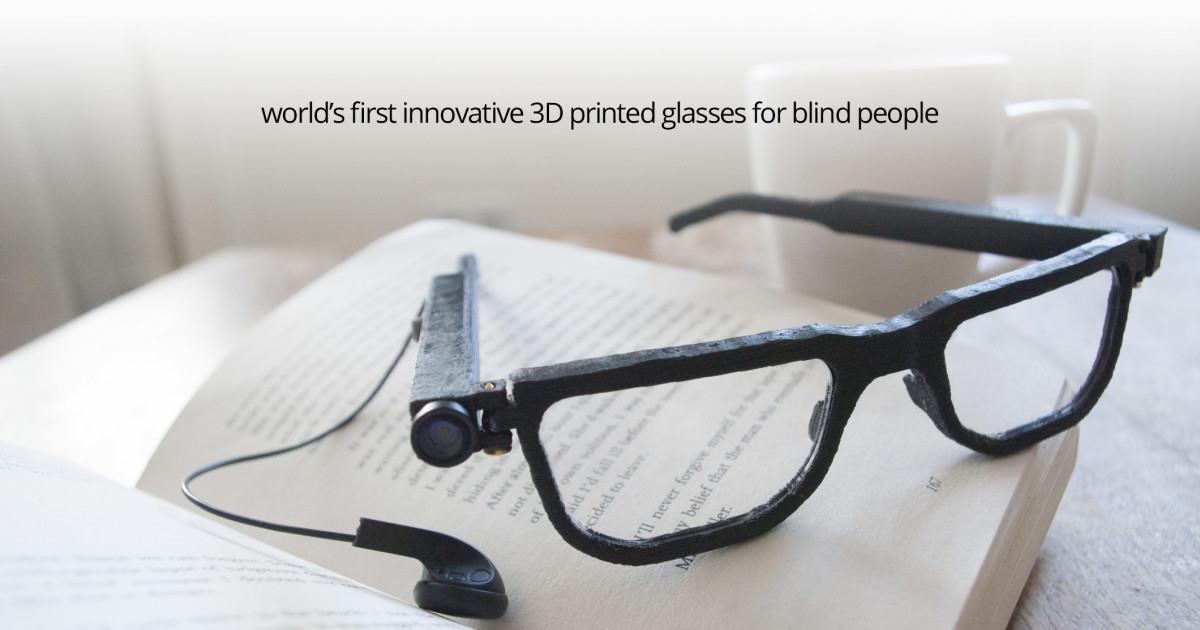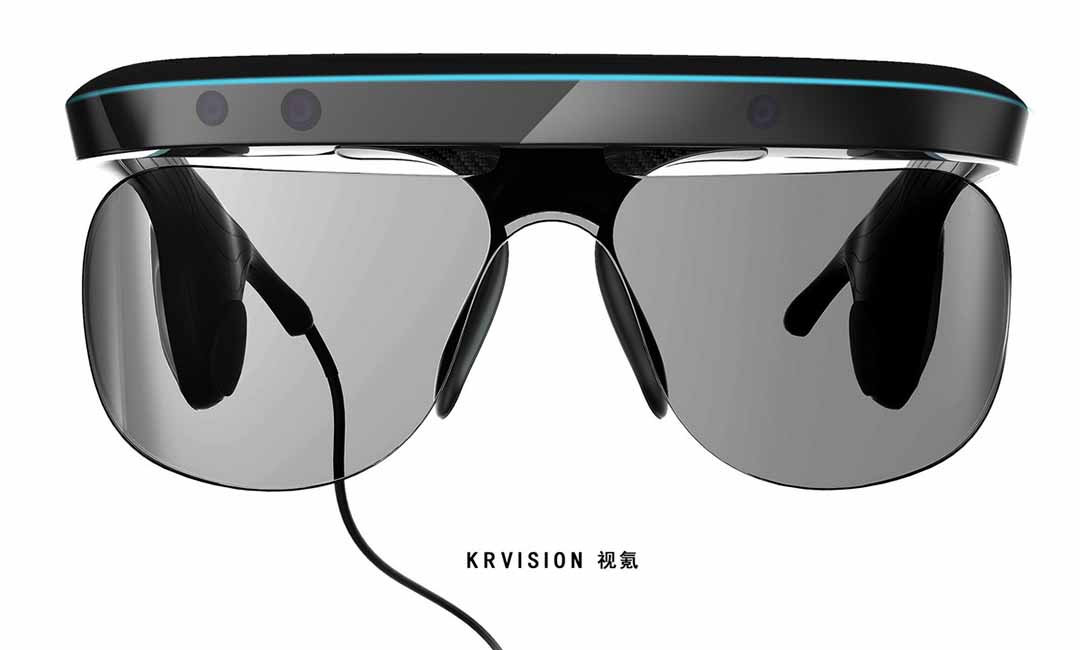Cutting-edge Solutions in Assistive Innovation for Visual Problems
The landscape of assistive modern technology for visual problems is developing rapidly, offering a variety of cutting-edge solutions that improve access and self-reliance. From advanced mobile phone applications that facilitate navigating to wearable devices designed for real-time support, these tools are reshaping the experiences of those with aesthetic disabilities. The assimilation of smart home modern technologies and academic sources has the possible to promote better area involvement. However, the effects of these advancements elevate essential questions concerning their ease of access and effectiveness in diverse contexts, necessitating a more detailed examination of their wider effect.
Advancements in Smartphone Applications
Over the last few years, innovations in mobile phone applications have actually substantially transformed the landscape of assistive modern technology for people with aesthetic disabilities. These applications utilize the effective sensing units and abilities of modern smart devices to supply individuals with tools that enhance freedom and accessibility in their lives.
Noteworthy amongst these innovations are applications developed for object recognition, which make use of the smartphone's camera to recognize products and offer spoken descriptions. Such functions equip individuals to navigate their environments better, whether identifying products in shops or finding individual belongings at home. Furthermore, text-to-speech applications have enhanced substantially, enabling customers to catch published message through their gadget's cam and obtain instant audio feedback, consequently promoting analysis and understanding.
Navigating applications tailored for visually damaged individuals have also arised, offering auditory guidance and comprehensive area details. These devices give critical support for flexibility, enabling customers to pass through unfamiliar rooms with self-confidence. Community-driven applications have cultivated social communication and resource sharing among people with visual disabilities, creating a helpful network that boosts their high quality of life. In general, smart device applications have actually become important allies in promoting autonomy and availability for people with aesthetic problems.
Wearable Tools for Navigating
Wearable tools for navigation have actually emerged as a groundbreaking option for individuals with aesthetic impairments, supplying hands-free assistance that boosts flexibility and orientation. These tools generally utilize advanced modern technologies, including GPS, ultrasonic sensing units, and expert system, to provide real-time feedback and instructions to individuals as they navigate their environment.
One noteworthy example of wearable navigation innovation is clever glasses, which can spot obstacles and relay auditory or haptic comments to the user, enabling safe and efficient movement in different setups. Various other devices, such as vests and belts geared up with sensors, can likewise educate users of their surroundings by supplying signals concerning neighboring things or adjustments in terrain.
Additionally, several wearable devices incorporate with smart device applications, allowing individuals to personalize their navigation choices and get tailored route recommendations. This personalization can dramatically enhance the customer experience, equipping people to take a trip with higher confidence and freedom.
As modern technology proceeds to establish, the possibility for wearable navigating gadgets to boost the lifestyle for people with aesthetic problems remains significant, leading the way for even more obtainable and comprehensive environments.
Smart Home Technology Assimilation

Additionally, wise home appliances outfitted with responsive interfaces or auditory responses supply instinctive interactions that provide especially to the needs of those with visual impairments. For circumstances, clever refrigerators can reveal their materials and expiry dates, while wise ovens can assist users via the food preparation process with audio guidelines.
Home automation systems, such as wise buzzers and security video cameras, supply satisfaction by enabling users to obtain signals and access live feeds via their mobile gadgets, enhancing individual safety and security (AI-powered visual aids). Additionally, integration with tablets and mobile phones makes certain that users can manage their home atmosphere from anywhere within their premises
As smart home modern technology remains to evolve, it holds the prospective to transform the living experiences of individuals with aesthetic problems, cultivating independence and improving lifestyle in a significantly connected world.

Educational Devices and Resources
Accessibility to reliable educational click reference tools and sources is vital for people with aesthetic impairments, as it equips them to involve fully in their discovering experiences. Numerous assistive modern technologies have actually been established to improve ease of access and foster independent knowing.
Additionally, instructional software particularly designed for aesthetically damaged customers supplies features such as high-contrast settings and personalized message dimensions. These tools suit varied knowing styles and make sure that pupils can customize their educational experience to their needs.
Moreover, accessibility to audio publications and virtual libraries expands the series of readily available knowing materials, allowing students to discover topics in depth without the limitations imposed by conventional print resources. Collaborative platforms that integrate access functions additionally help with team jobs, ensuring that aesthetically impaired students can contribute meaningfully alongside their peers.
Community Support and Involvement
A durable network of area assistance and engagement is vital for individuals with visual impairments, fostering a comprehensive atmosphere where they can prosper. Community organizations, regional advocacy groups, and volunteers play a critical duty in providing sources, info, and friendship, which are crucial for enhancing the top quality of life for those influenced by aesthetic disabilities.
Engagement activities such as workshops, gatherings, and assistance teams not only promote ability growth but additionally promote social communication, decreasing feelings of seclusion. These efforts encourage individuals to share successes, difficulties, and experiences, thereby reinforcing area bonds. In addition, collaborations with regional services can cause higher accessibility in public spaces, better integrating individuals with aesthetic problems right into the area.
Innovation additionally boosts neighborhood engagement via on the internet platforms that provide online support system and resources, enabling people to link despite geographical barriers. By using both in-person and digital remedies, communities can create a thorough support network. Ultimately, cultivating cooperation amongst numerous stakeholders-- including households, instructors, and medical care experts-- makes sure that individuals with aesthetic problems get the all natural assistance essential to navigate day-to-day live effectively and with dignity.
Conclusion
Innovative solutions in assistive innovation for visual disability dramatically improve the high quality of life for Read Full Report individuals encountering these difficulties. The integration of smart device applications, wearable devices, smart home modern technology, and educational devices fosters greater independence and ease of access. Moreover, area support and interaction more equip aesthetically damaged individuals, promoting my blog inclusivity and involvement in various aspects of life. Jointly, these developments not just change everyday experiences however additionally lead the way for a more fair society.
The landscape of assistive innovation for visual impairment is evolving rapidly, presenting a variety of ingenious services that boost access and independence. Community-driven applications have cultivated social communication and source sharing among people with visual impairments, creating an encouraging network that enhances their top quality of life. Generally, smartphone applications have actually come to be important allies in advertising freedom and accessibility for people with aesthetic impairments.
Several people with visual impairments are finding greater autonomy with the combination of clever home innovation.Cutting-edge services in assistive modern technology for visual problems dramatically improve the top quality of life for individuals dealing with these obstacles.